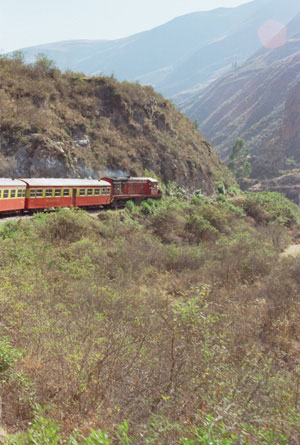
On the way. If it looks precarious, it's because it is. It's actually more precarious than it looks, since the photo was taken from the back, which was snaked around. After the train we caught a bus.
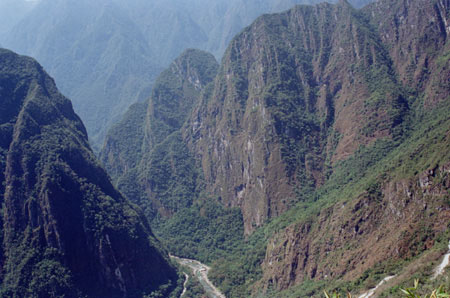
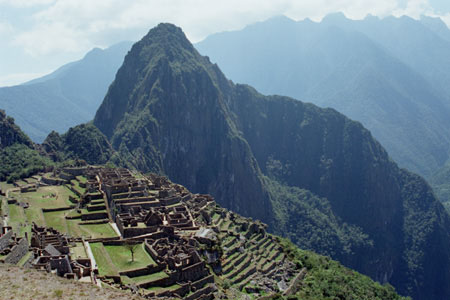
It's so hilly that you have ready-made aerial views.
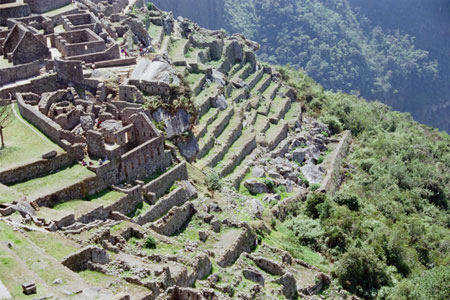
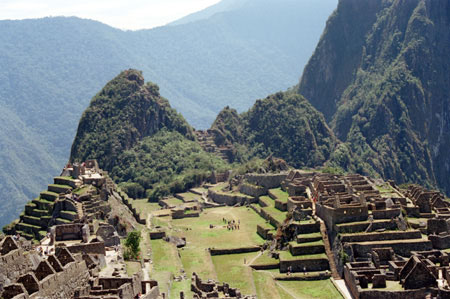
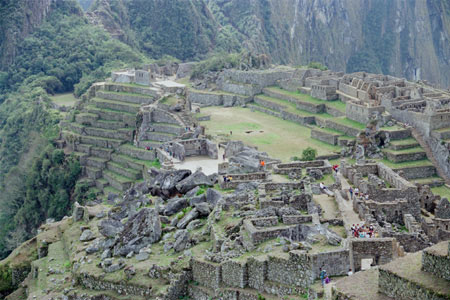
The people in the photo should give you an idea of the scale.
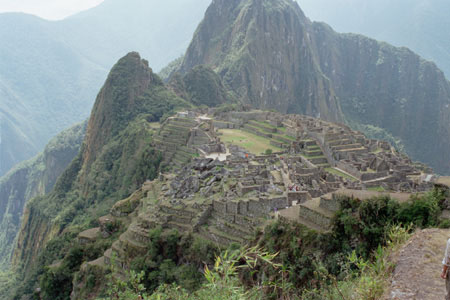
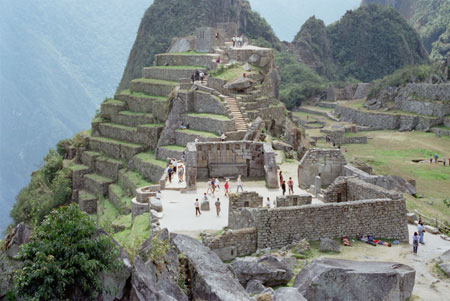
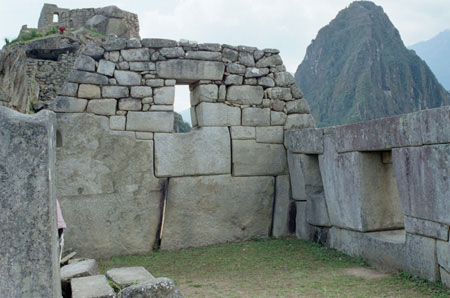
The stones were fitted together perfectly without cement. In 700 years, this small shift was the only damage that numerous earthquakes could do.
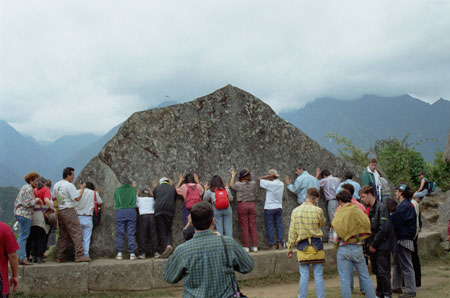
for the non-philosophers among us. The tour guide said that many hippies think this stone emanates cosmic energy. This group hedged their bets.
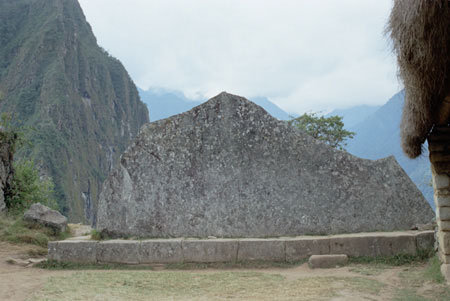
Without the tourists. Another explanation is that it's a portrait of the mountains.
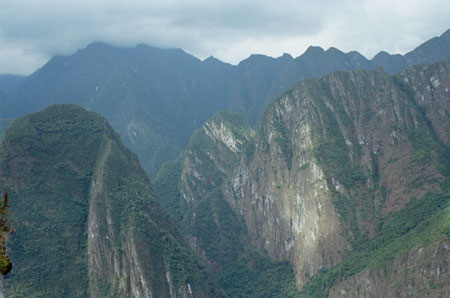
For those of you who prefer to bypass the portrait.
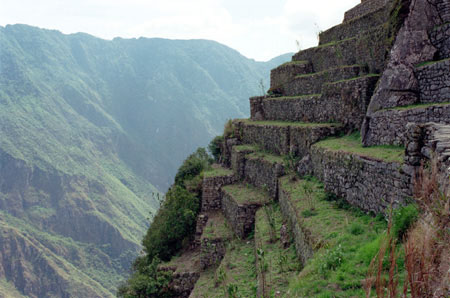
Not a great idea to fall from here.
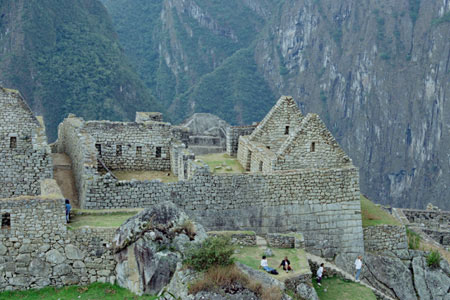
Though uncovered now, they had thatched roofs when they were in use.
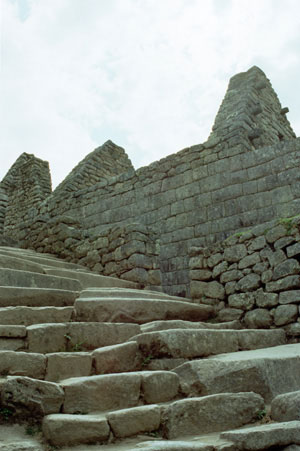
Where the thatch was tied on with strips of llama leather
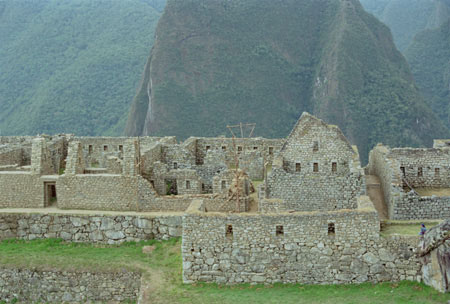
was fairly extensive
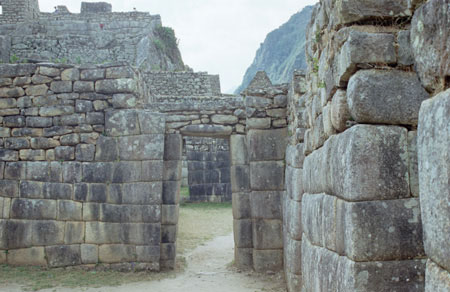
Heavier stones support the lighter ones
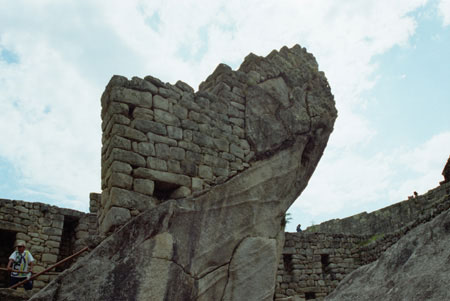
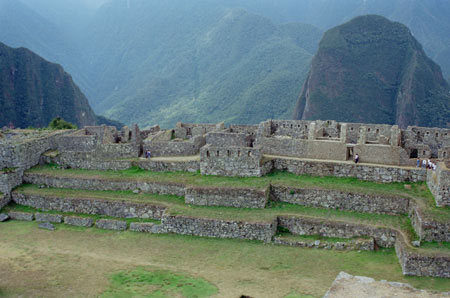
This might have been an amphitheater.
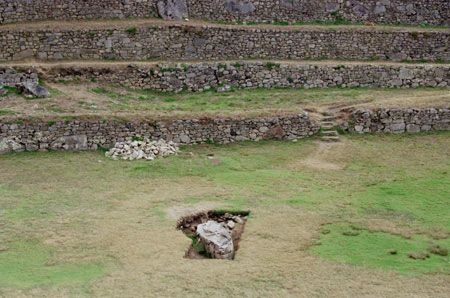
Recently, South African archaeologists located this stone buried in the center of the amphitheater. They think that this stone may be the crux of Machu Picchu.
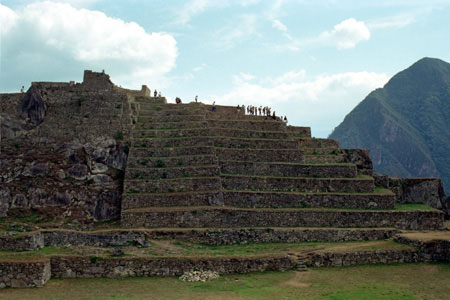
With ant-like people on the terraces.
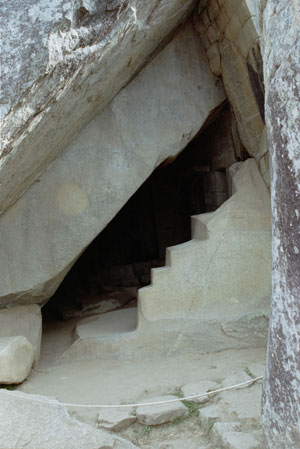
or at worst, an under-the-stairs type of place for naughty Inca children. Some naughty grown-up tourists crossed the ropes and had their picture taken.
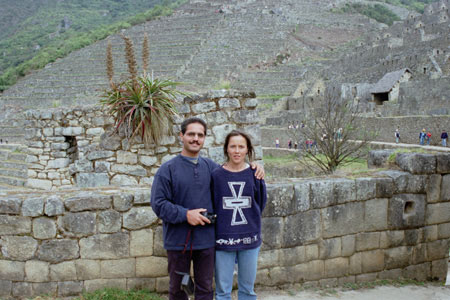
My Swiss travel companions throughout the Cuzco trip.
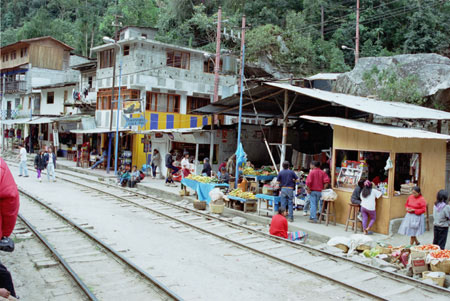
On the way back. The train comes through infrequently, but the station also functions as the town.